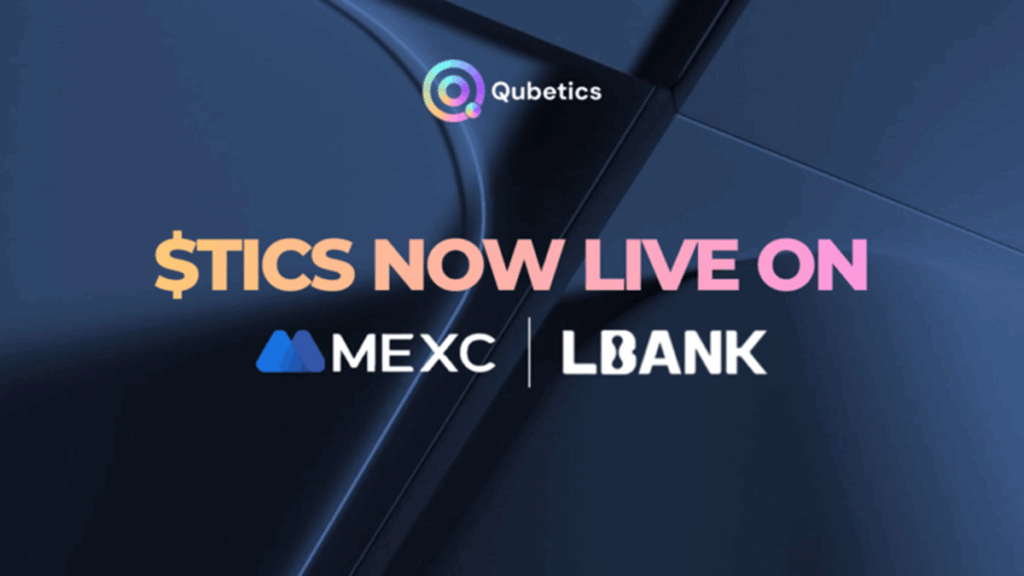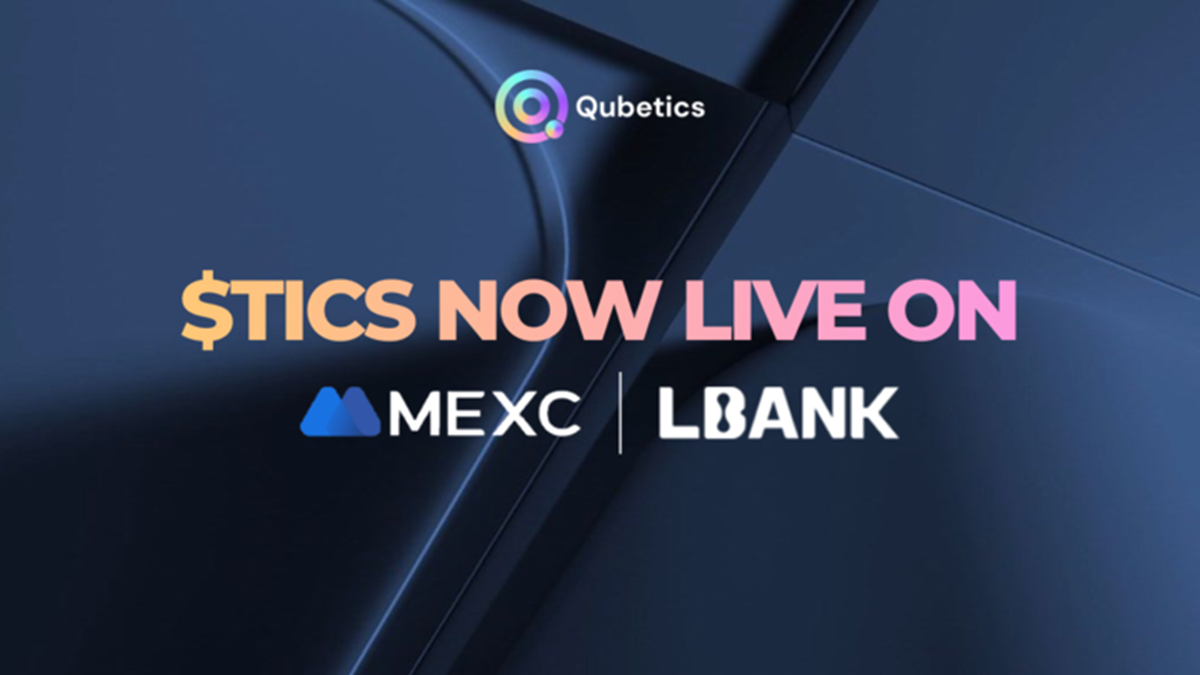What does it really mean to catch the most potential crypto before it dominates the charts? For those still tracking early-stage projects with real-world utility and visible momentum, Qubetics has become a name impossible to overlook. Within just the first hour of launch, it exploded from a $0.40 debut to $4.20, catching the attention of both early participants and data-driven analysts. The project not only integrates seamless cross-chain functionality, but also comes with governance incentives, validator rewards, and institutional-level infrastructure, features rarely seen together this early in a project’s lifecycle.
At the same time, other high-cap projects like Ethereum and Kaspa are dealing with pressing issues unique to their maturity. Ethereum is now focused on internal licensing debates that could reshape its developer ecosystem, while Kaspa addresses liquidity complications from its fair launch mechanism. Both highlight different layers of the crypto market today, one is refining its foundation, while the other is stabilizing its user base. Against this backdrop, Qubetics stands out for its rapid rise, strong support level at $2, and the ability to unify Bitcoin and Ethereum-level networks through a single Layer 1 solution. The growing number of early buyers and its 30% validator APY structure make it one of the most potential crypto assets currently on the radar.
Qubetics Enables Seamless Cross-Chain Movement Without Bridges or KYC
In the current blockchain environment, fragmented chains limit how effectively users can move assets, share data, or operate across platforms. Qubetics directly addresses this by functioning as a Web3-aggregated chain that unifies networks like Bitcoin, Ethereum, and others under one system. This interoperability means participants no longer need to switch chains to complete transactions or trade between networks.
A real-world blockchain example of such fragmentation is seen when users need to bridge their assets from Bitcoin to Ethereum using third-party apps, often paying high fees and undergoing manual KYC checks. Qubetics eliminates that friction entirely. It achieves this through its unified Layer 1 architecture, making asset movement simple, cost-effective, and compliant with privacy-focused decentralization principles. For those searching for the most potential crypto with real-world cross-chain utility, Qubetics is rapidly becoming the preferred option.
DPoS Governance in Qubetics Introduces Passive Income With Security
Qubetics uses a Delegated Proof of Stake (DPoS) system that distributes responsibility between validators and delegators. This governance model improves transaction speed, energy efficiency, and trust within the network. Validators must hold at least 25,000 $TICS tokens, while delegators, who need at least 5,000 $TICS, vote on which validators should be entrusted with securing the network.
The system not only decentralizes authority but also incentivizes long-term participation. Validators receive up to 30% APY, and delegators earn proportional shares of those rewards based on their stake. This combination of passive yield and participatory voting is gaining popularity across high-utility crypto networks and continues to be a key factor in Qubetics’ recognition as the best crypto to buy now.
Qubetics Launch Data Confirms One of the Strongest Entry Points in Recent Crypto History
After raising $18.4 million from over 28,500 early buyers during its presale, Qubetics officially launched at $0.40. In the first 60 minutes, it surged to $4.20, marking a 950% or 10.5x gain from launch and an astounding 420x return from its presale entry point of $0.01. A participant who contributed $10,000 in the presale would now be holding tokens worth $4.2 million at peak.
Trade volume hit over $700,000 within 24 hours of listing on MEXC, and Qubetics has maintained a firm support level at $2, with buy pressure increasing near that zone. Market recognition has placed Qubetics in the top 10 cryptocurrencies on CoinMarketCap, confirming its strong standing among the most potential crypto projects today. Analysts now forecast a price range of $10 to $15 following the mainnet launch, especially as it maintains real-world adoption through its wallet, validator program, and no-KYC cross-chain functionality.
Kaspa Confronts Liquidity Distribution Hurdles After Fair Launch Strategy
Kaspa has taken a decentralized route with its fair launch design, opting not to allocate any tokens to venture capital firms, centralized exchanges, or team wallets. While this supports its image as community-first, it has created complexities in liquidity provisioning. The absence of concentrated liquidity providers means Kaspa’s organic order book has faced slippage issues and wider spreads, particularly during periods of volatile demand.
In addition, Kaspa’s attempt to decentralize token allocation has had consequences on price discovery. Without a structured liquidity reserve or tiered release strategy, community members have had to shoulder liquidity formation themselves, which places ongoing pressure on price stability. As the project continues to refine its approach to exchange listings and user acquisition, these foundational decisions will influence Kaspa’s trajectory in the broader crypto space.
Ethereum Pushes Copyleft Licensing Debate Into Crypto Development Spotlight
Ethereum’s founder recently advocated for the use of copyleft licenses, such as GNU GPL and AGPL, in crypto projects. This move aims to limit corporate appropriation of open-source code without reciprocal contribution. Ethereum’s leadership is concerned that large entities may extract value from freely available smart contract systems without returning value to the developer community.
The copyleft licensing proposition would force derivative crypto projects to share their improvements, thus preserving a sustainable innovation cycle. However, this approach has sparked debate, especially among developers who rely on permissive licenses for rapid commercial deployment. Ethereum’s ecosystem is now navigating the tension between code ownership, collaboration, and commercial utility, all while remaining a dominant force in the decentralized finance sector.
Why Qubetics, Ethereum, and Kaspa Stand Out in the Most Potential Crypto Market
In a market driven by performance, governance, and real-world application, each of these three projects occupies a unique position. Ethereum continues to redefine its ethical and legal structure through licensing reform, aiming to safeguard developer rights while maintaining innovation. Kaspa, on the other hand, is reinforcing its decentralized ideals by prioritizing a liquidity structure that fully depends on community participation, although it does face distributional challenges.
Qubetics is simultaneously gaining traction as the best crypto to buy now by delivering measurable performance milestones. A 420x price explosion, successful presale figures, and its unique interoperability model set it apart. The Delegated Proof of Stake (DPoS) mechanism reinforces its security and governance structure, while real-time rewards keep its user base actively engaged. In terms of practical impact, Qubetics is offering solutions to both the structural fragmentation of blockchain and the incentive shortfalls faced by token holders. As community members look beyond surface metrics, these three projects, each in different development stages, are defining what it means to be in the circle of the most potential crypto picks right now.
For More Information:
Qubetics: https://qubetics.com
Twitter: https://x.com/qubetics
FAQs
What makes Qubetics one of the most potential crypto projects?
Its 420x early ROI, DPoS governance, and interoperability across BTC and ETH chains make it a clear standout.
How does DPoS help Qubetics participants earn rewards?
By staking $TICS tokens, holders vote for validators who manage the network and earn a portion of their 30% APY.
What is the launch history of Qubetics?
Qubetics raised $18.4M, launched at $0.40, and hit $4.20 in the first hour, becoming one of the most potential crypto stories this year.
Summary
Qubetics, Ethereum, and Kaspa each represent a critical trend in today’s crypto space. Qubetics captured early attention with a 420x surge from its $0.01 presale to a $4.20 ATH and a total raise of $18.4 million. It now enables seamless no-KYC cross-chain transfers and offers up to 30% APY through its DPoS model. Ethereum, meanwhile, is focused on ethical software licensing reform to protect open-source innovation. Kaspa’s liquidity challenges highlight the difficulty of decentralized token distribution without centralized backing. Together, these projects reflect what defines the most potential crypto assets today, from foundational redesign to scalable incentives and infrastructure readiness.
Press releases or guest posts published by Crypto Economy have been submitted by companies or their representatives. Crypto Economy is not part of any of these agencies, projects or platforms. At Crypto Economy we do not give investment advice, if you are going to invest in any of the promoted projects you should do your own research.








